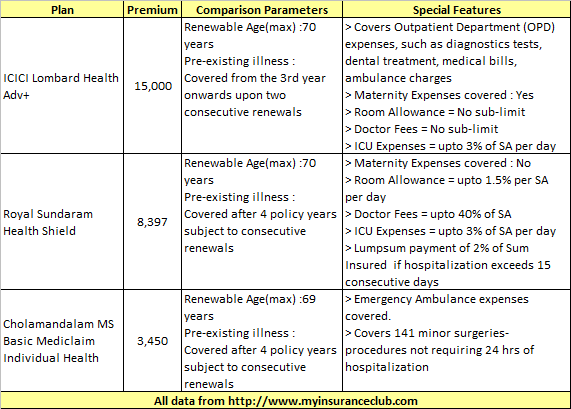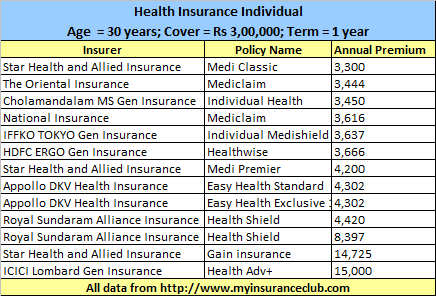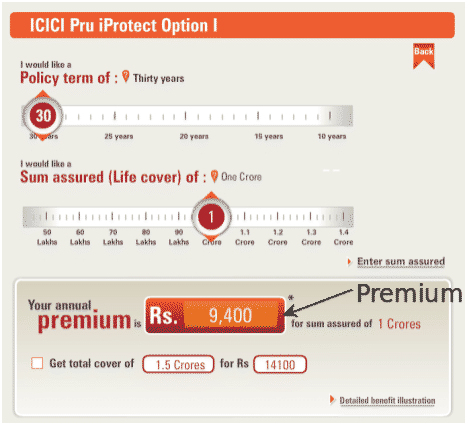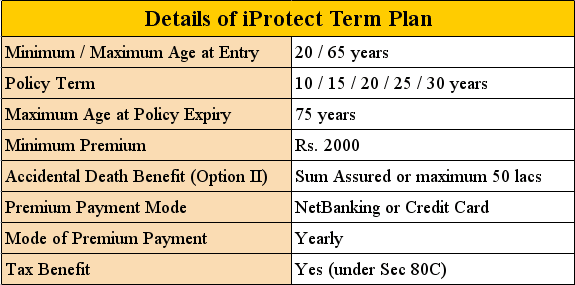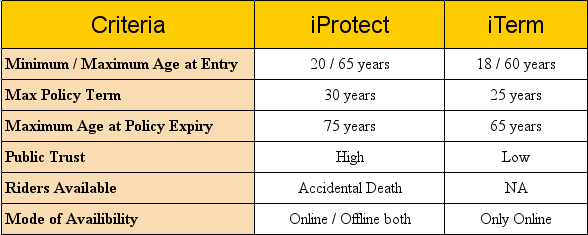Want to invest in the best mutual funds in India? Read on. I have compiled a short list of Mutual Funds which are top mutual funds in the Equity Diversified category. These are long-term winners in their categories and have proved their performance over the years by beating their benchmark and category average by a good margin. These are non-tax saving Equity diversified mutual funds that are large-cap oriented. Remember that I am giving a list of funds. These are funds that have more than half allocation in large-cap oriented companies and around 50% of their money in the top 3 sectors they hold. Based on these criteria, I am putting 7 best mutual funds along with analysis, some of these are very old and some are relatively newer. (last year list)
List of Best Equity Mutual Funds
Source: valueresearchonline.com
Portfolio & Sector Allocation
All the above funds have returned around 20% or more in different time frames consistently, which is very encouraging when you want to invest in these funds. However our concentration this time is large-cap oriented mutual funds, we are not including funds that have a high concentration in midcap or small-cap funds. Let’s look at these mutual funds share in Large or Giant Companies. My criteria were to have at least 60%+ in Large/Giant Companies and around 50% allocation in the top sectors they invested in. We also have funds expense ratio which is around 2% for each of them. Read Magic of SIP
Source: valueresearchonline.com
Fund Manager and a Brief Overview of Mutual Funds
Past performance is just one of the criteria we can look at, but it’s not enough and not a guarantee of how it will perform in the future. Let’s also look at who manages it and how these funds have done so far overall as per their mandate and investing philosophy. Please note, that we are talking about the Growth option here and not the dividend option.
HDFC Top 200
HDFC Top 200 is one of the most well-known Mutual Funds in the country. It’s an amazing performance of 26% CAGR in the last 14 yrs is proof. 10 lacs invested in HDFC Top 200 since Inception is worth 2.54 crores (non-taxable) today compared to 30 lacs in FD (taxable). Some achievements of funds are that in the 2008 bear market, HDFC Top 200 was able to restrict its fall to 45% only, which was 11% less than its benchmark and 8% less than its category. Prashant Jain is the Fund Manager of HDFC Top 200 and one of the best known and famous Fund managers in the country with a long term experience.
Prashant Jain’s Investment Approach: “The criteria that go into selecting stocks/sectors are quality, our understanding, growth prospects, valuation of businesses and the composition of the benchmark – BSE 200.”. The fund has good 20% allocation in Midcap or small-cap stocks which gives a kicker in returns.
How to look beyond short term returns in Mutual Funds
DSP BlackRock Top 100 Equity
DSPBR top 100 is not a decade old fund, but its performance is strong enough to say that it’s one of the best in the category as of now. The fund has given enough proof of its performance like even in the first year of its launch it gave an amazing 129% return beating its benchmark by an “oh my god” 29% return:). It also showed its capacity to restrict loses in the bear market of 2008 by falling by only 46% compared to its benchmark which fell by 55 %, thereby giving a better performance by 9 %. The best thing I liked about this fund is that this fund has provided very strong performance by mainly focusing on large-cap companies, the fund allocation in Large-cap companies stands at 94% which is outstanding. This clearly shows the competence of Fund manager Apoorva Shah who is managing the fund for the last 3 yrs.
Birla Sun Life Frontline Equity A
This is another winner in the long run. Over the years Birla Sun life frontline equity has consistently outperformed its benchmark by a good margin. During the market falls of 2004, 2006 and the big crash of 2008 and early 2009, This fund was able to restrict downsides better than its benchmark. The fund is largely Large Cap oriented, however the fund is known to take some risks in Midcap space and hence has seen one-quarter and its first year lagging behind its benchmark, but that was not a prolonged behavior, over all it has done great. The main reason it came to top in performance was the entry of Mahesh Patil as the fund manager in Nov 2005.
HDFC Equity
This fund is for long-term investors because HDFC Equity does not hesitate to take risks. Having a good allocation in midcap/small-cap companies, Its performance comes by being invested for long-term, which means short-term volatility in its performance. Being 15+ yrs old fund, have shown its performance over and over again, this one is for people who really like to play with mutual funds on a long-term basis. The fund manager is again star performer Prashant Jain, who took over this fund in 2003 and the fund has never looked back. Just to give you a flavor, the fund in 2009 has given 30% more than Nifty Index and in the last 1 yrs itself, it has given 42% return compared to just 15% from Nifty. You can count this one as an aggressive large-cap fund for investors with a strong heart and long-term vision
UTI Opportunities
As the name suggest, UTI opportunities are for you, only if you a risk taker and like to bet on different opportunities available in the market. As per the mandate of UTI opportunities it looks at the gaps available in the market and the sector and pics the stocks which are really undervalued and might outperform in the future. As per the fund mandate, the Fund manager dynamically shifts between sectors depending on the macro economic outlook and opportunities available in the market. This means the potential of a huge upside as well as the risk of getting wrong. After Harsh Upadhyaya took over in 2007, the fund has done wonders and has given returns double than its benchmark, which is impressive. So if you a kind of investor who likes to take chance on opportunities, UTI Opportunities should be in your Portfolio.
Reliance RSF Equity
Reliance RSF has shown some impressive performance over the last some years. However the fund is fairly aggressive in nature and is known to take risky calls whenever it finds good opportunity, despite being called a large-cap fund, Reliance RSF has large amount (45%) of portfolio in small and mid-cap stocks at the time of writing this article, The fund did not really do very well when it started, but within a year it came on track and then showed good performance. Remember that this is a risky fund and can be actually compared to mid-cap funds in some sense given its nature of taking risks. So it might not suit you if you like to take long-term calls and want to be on the safe side. The fund is also known to churn its portfolio faster, so be cautious.
UTI Dividend Yield
This fund is really special. UTI Dividend Yield is another gem in the basket of Diversified mutual funds with a different style of investing. This is one fund, which has a woman for a fund manager in Swati Kulkarni, who has done a wonderful job in managing the fund till now. As per the mandate, the UTI dividend yield fund should make an investment of at least 65 percent of the portfolio in equity shares that have a high dividend yield at the time of investment. The fund has managed to successfully deliver on its commitment and has never deviated from its words. That’s called ethics and focus. Due to this, the fund has given a strong performance and because of its nature of strategy, the downfall is always restricted well. Ladies would like to invest in this fund given they like to play safe and it also comes from a lady fund manager 🙂 (Women & Personal Finance in India)
Which one should you invest in?
Remember that you have to take a call based on what your time frame is and which fund suits your requirement, Overall, if you are too confused in choosing the fund, I would say the best thing would be to choose any, randomly and invest rather than delaying your decision because of confusion. Another thing which you should understand that this is not an exhaustive list. There are enough funds other than these which could have been here in the list, but I have not included them as these 7 funds were the one which came on the top as per my criteria and also because I wanted to limit the number of funds to a single digit so that one can choose with less confusion. Also, make sure your asset allocation is correct
Disclaimer: Note that these funds are pure equity funds and just because they have performed excellently in history does not make them future star performers. This is just an assumption, that they will keep doing great even in the future given their investment style and integrity in management till date. Also, you have to make sure you review your investments every year so that you throw out the laggards and pick better funds. Expect around 12-13% in the future even though they have high potential. This article should in no way be treated as an encouragement to invest in these funds. Your decision is purely yours 🙂
Comments: Which other funds did you expect in this list? Do you have other funds’ names which deserved to be here according to you? Do these funds suit your requirements?

